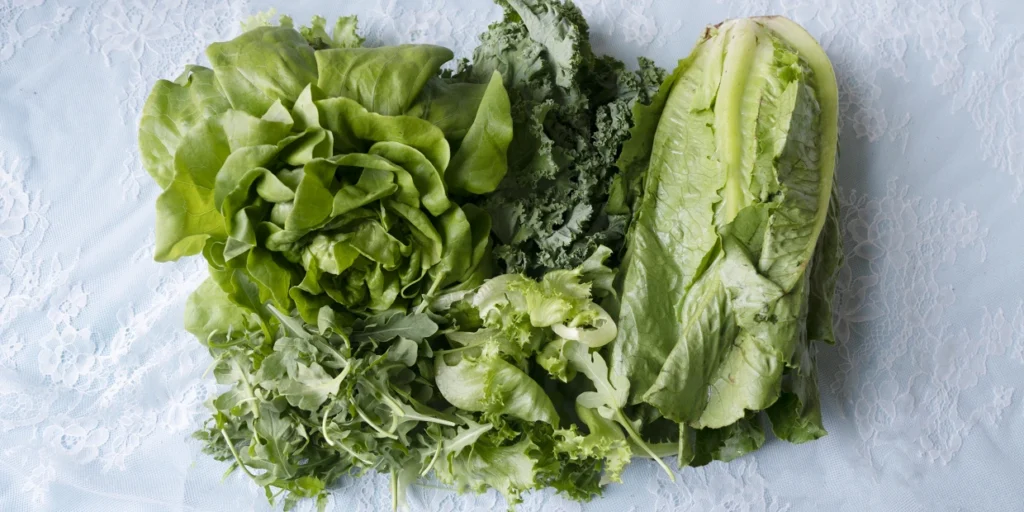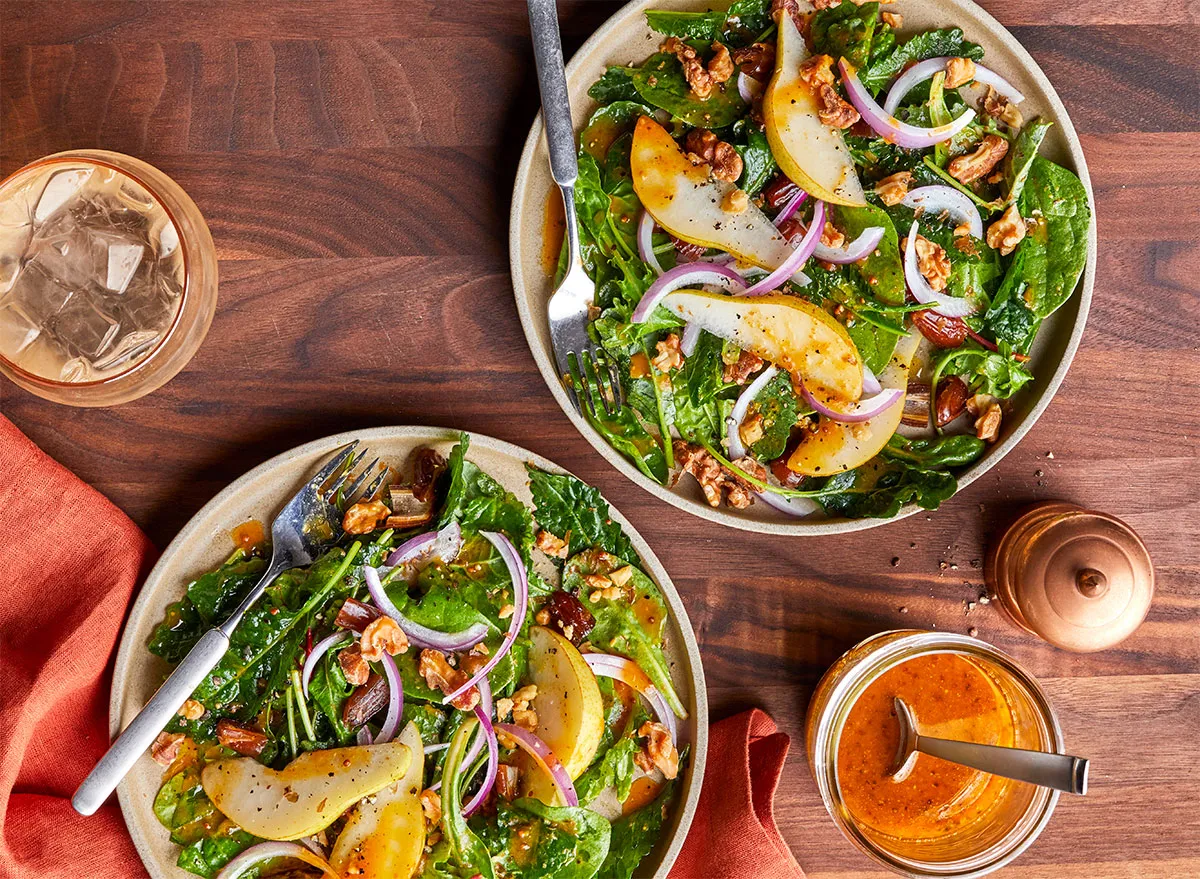When it comes to eating healthy, salads are often the go-to option for many of us.
But not all salads are created equal! What you add—or don’t add—can make a huge difference in the nutritional value of your meal.
So, how do you make sure your salad isn’t just a bowl of leafy greens with a sprinkle of cheese? Let’s dive into eight tips that’ll help you make healthier salad choices, ensuring that each bite is packed with nutrition and flavor.

1. Start with a Variety of Greens
Choose Nutrient-Dense Leafy Greens
When it comes to salad bases, not all greens are equal.
While iceberg lettuce is crunchy and refreshing, it lacks the nutritional punch of darker greens.
Opt for nutrient-dense options like spinach, kale, or arugula.
These greens are rich in vitamins A, C, and K, as well as minerals like iron and calcium.
Mix It Up
Don’t stick to just one type of green.
Mixing different greens not only adds texture and flavor but also increases the range of nutrients in your salad.
For instance, pairing spinach with romaine lettuce or adding some shredded cabbage can make your salad both more interesting and more nutritious.
2. Add a Rainbow of Vegetables
Why Color Matters
The color of vegetables is often an indicator of their nutrient content.
Brightly colored veggies like bell peppers, carrots, and tomatoes are loaded with antioxidants, vitamins, and minerals.
Aim to fill your salad bowl with a variety of colors to maximize the health benefits.
Try New Veggies
Branch out from the usual salad staples.
Add in some roasted beets, raw radishes, or shredded zucchini.
These veggies not only enhance the flavor and texture but also introduce different nutrients into your diet.
3. Incorporate Healthy Proteins
Go Beyond Chicken
Adding protein to your salad is key for a satisfying and balanced meal.
While chicken is a popular choice, there are plenty of other options.
Beans, tofu, tempeh, and chickpeas are excellent plant-based proteins that offer a hearty texture and a variety of nutrients.
Don’t Forget Nuts and Seeds
Nuts and seeds are great additions too.
They provide protein, healthy fats, and a delightful crunch.
Consider sprinkling some almonds, sunflower seeds, or chia seeds over your salad for an extra nutrient boost.
4. Watch the Dressing
Homemade vs. Store-Bought
Dressings can make or break a salad, and store-bought options are often loaded with sugars, unhealthy fats, and preservatives.
Making your own dressing is a healthier alternative.
Try a simple mix of olive oil, lemon juice, mustard, and a pinch of salt.
Portion Control
Even when using a healthier dressing, moderation is key.
Aim for about two tablespoons of dressing per serving.
Too much dressing can turn your salad from a healthful meal into a calorie bomb.

5. Be Mindful of Carbs
Choose Whole Grains
If you’re adding grains to your salad, opt for whole grains like quinoa or farro rather than refined grains.
Whole grains are richer in fiber and nutrients, which are essential for digestion and overall health.
Limit High-Carb Additions
While adding carbs like croutons or pasta can be tempting, they can quickly increase the calorie count of your salad.
If you’re craving something crunchy, try roasted chickpeas or nuts instead.
6. Opt for Lean Proteins
Grill Instead of Fry
When adding proteins like meat or seafood, grilling is a healthier choice compared to frying.
Grilled chicken, salmon, or shrimp can add flavor without extra fat and calories.
Go for Fish
Fish, particularly fatty fish like salmon, is an excellent source of omega-3 fatty acids and can elevate the nutritional profile of your salad.
Just be sure to avoid heavy sauces or batter.
7. Control Portions
Use a Smaller Plate
Sometimes the biggest challenge is not what you put in your salad, but how much.
Using a smaller plate can help control portion sizes and prevent overeating.
This is especially helpful when you’re loading up on calorie-dense ingredients.
Balance Your Plate
Ensure your salad is balanced with a mix of greens, proteins, vegetables, and healthy fats.
This will help keep you full and satisfied without overloading on any one ingredient.
8. Stay Hydrated
Add Hydrating Ingredients
Cucumbers, celery, and tomatoes are not only delicious but also high in water content.
Including these hydrating ingredients in your salad can help keep you well-hydrated and feeling fresh.
Drink Water
Alongside eating your hydrating salad, remember to drink plenty of water throughout the day.
Staying hydrated is crucial for overall health and complements a balanced diet.
Conclusion
Making healthier salad choices doesn’t have to be complicated.
By focusing on a variety of greens, colorful vegetables, and lean proteins while being mindful of dressings and portions, you can turn any salad into a nutritious powerhouse.
Remember, the key is balance and moderation.
With these tips, you’ll be well on your way to enjoying salads that are not just tasty but also packed with health benefits.

FAQs
1. Can I make salads in advance?
Yes, you can prepare salads in advance.
However, keep the dressing separate until you’re ready to eat to prevent the greens from becoming soggy.
2. What are some good alternatives to store-bought salad dressings?
Homemade dressings using ingredients like olive oil, vinegar, lemon juice, and herbs are excellent alternatives.
They’re fresher and you can control the ingredients.
3. How can I make my salad more filling?
Adding a source of protein like grilled chicken, beans, or tofu, and incorporating whole grains like quinoa can make your salad more filling and satisfying.
4. Are there any vegetables I should avoid in salads?
Generally, most vegetables are great for salads.
However, avoid adding large amounts of high-starch vegetables like potatoes or sweet corn if you’re watching your carb intake.
5. How can I make my salad taste better without adding extra calories?
Enhance flavor with herbs and spices such as basil, cilantro, or a pinch of chili flakes.
Adding a squeeze of lemon or a splash of vinegar can also boost flavor without extra calories.
